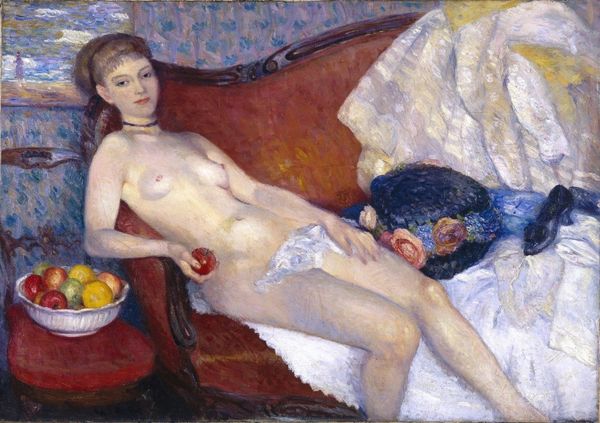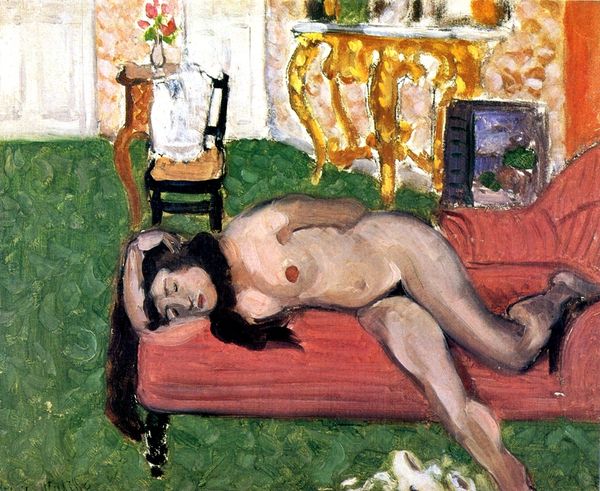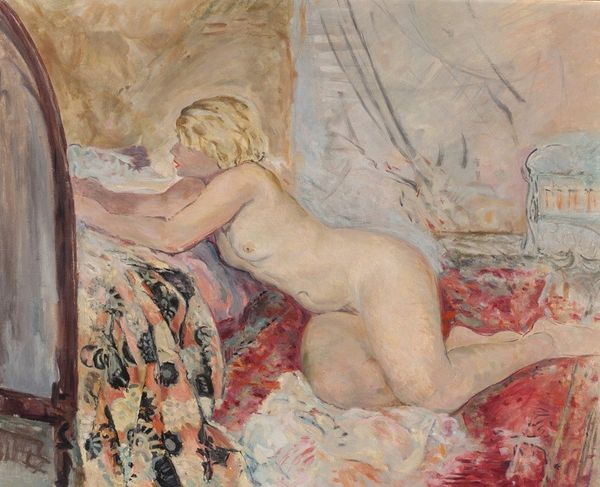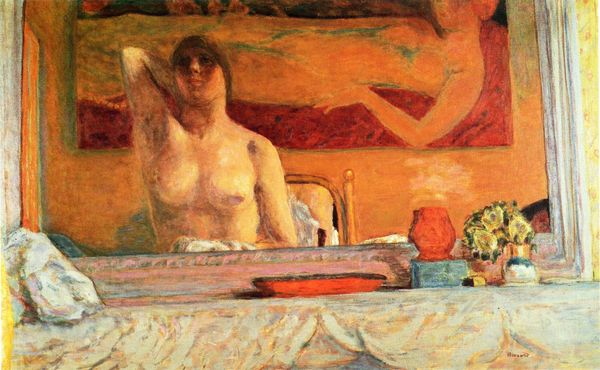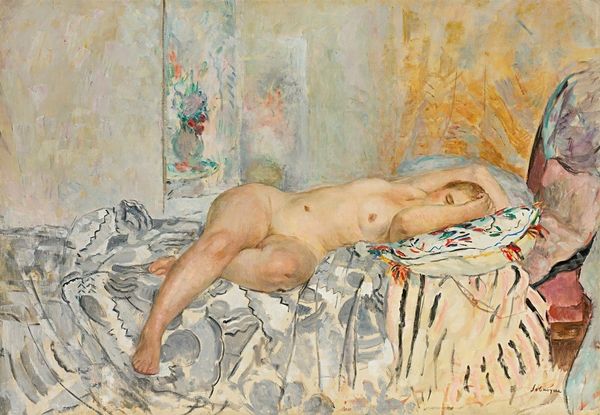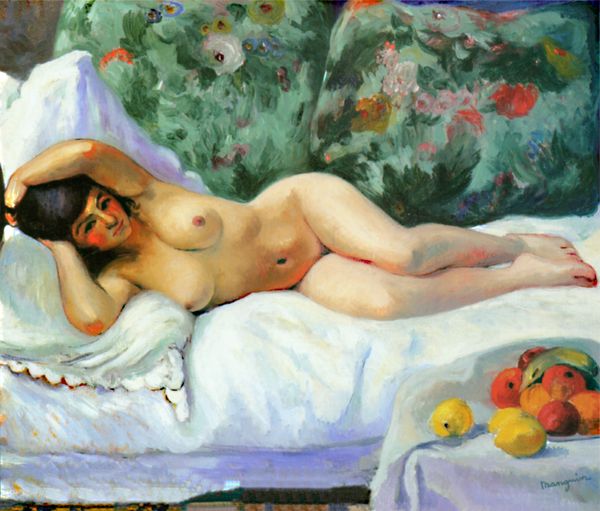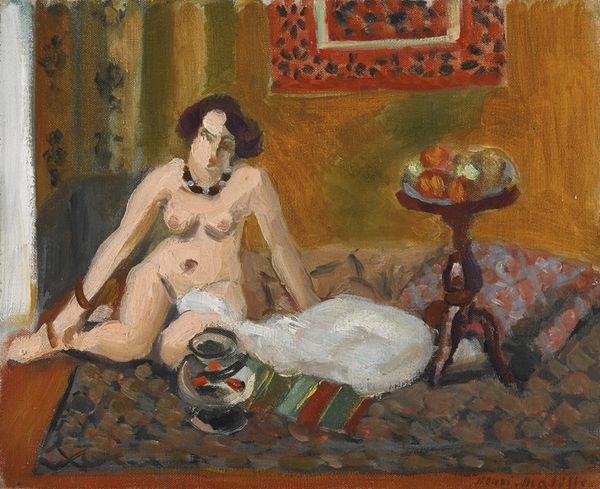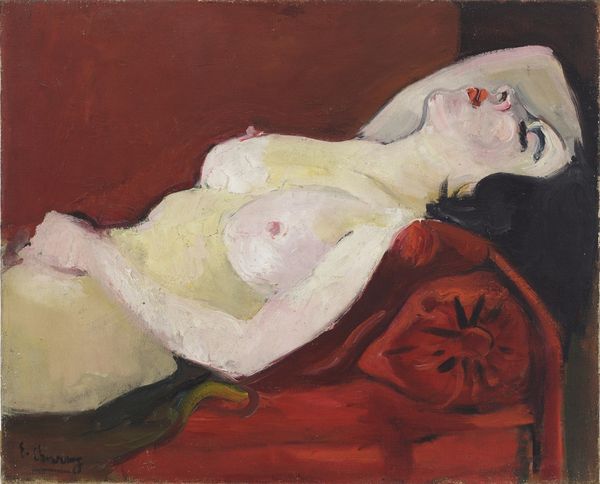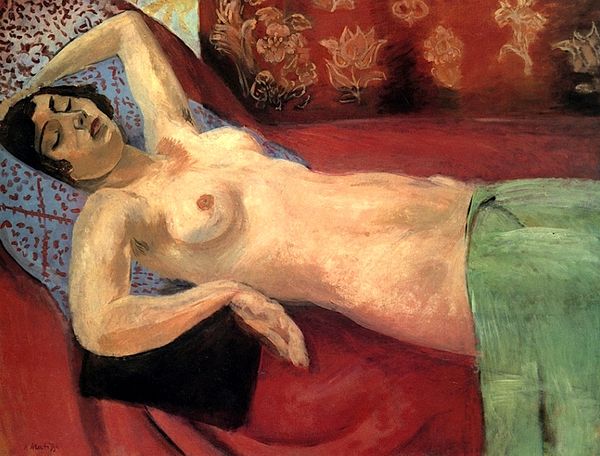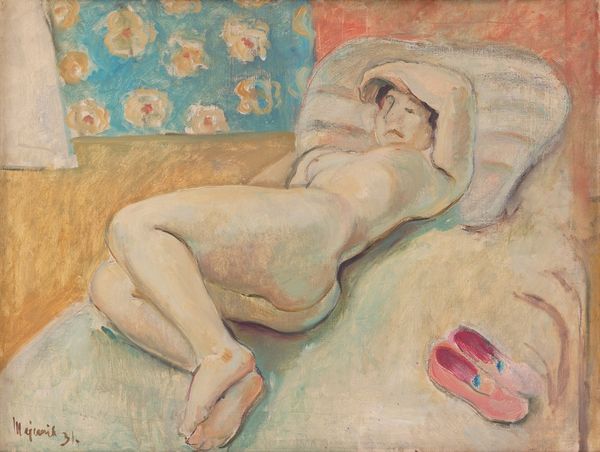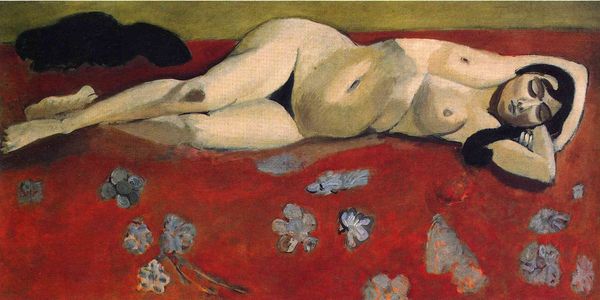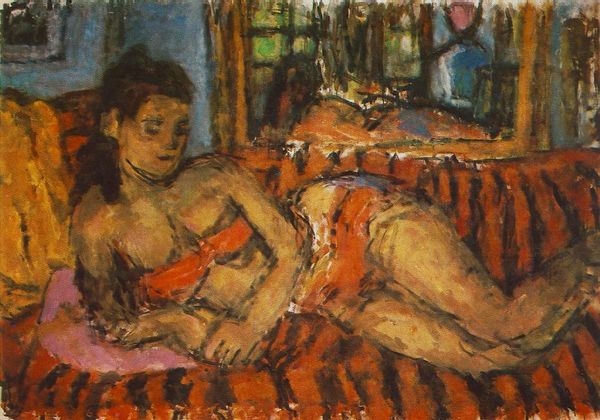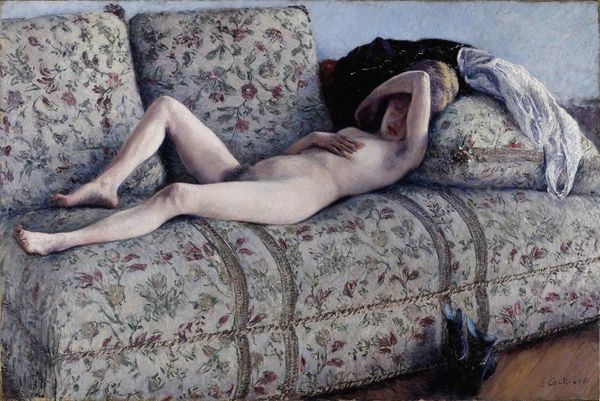
Copyright: Public domain
Editor: Here we have Henri Manguin’s “Nude,” painted in 1922 using oil on canvas. The scene feels so intimate and domestic, almost voyeuristic, wouldn't you agree? How would you interpret this work? Curator: I’m drawn to the materiality, the physical properties of the painting itself, the ways in which the production reveals societal values. Manguin chose oil paints—what effect does this decision have on the reception, consumption and potential cultural value of the work? Is the viewer directed to admire the materials, technique, and consumption surrounding the creation and subsequent exhibition of the painting? Editor: That’s interesting; I hadn't thought about it in terms of materials elevating its value in that way. It seems so casual at first glance. But could it also be seen as subverting traditional expectations for this genre, intimism? Curator: Intimism does indeed imply a certain level of comfort and candidness. However, how does Manguin's use of light and color—and the specific arrangement of the setting – contribute to or detract from this sense of intimacy? It certainly is challenging the boundaries between high art and everyday life. Does the fruit still life bring light on daily consumption and access to goods for some but not others? Editor: Now that you point it out, I see a complex interplay. It's not simply a celebration of domesticity but more a commentary on the constructed nature of those settings and the way class manifests there, plus a clear demonstration of art and work that led to that demonstration. The material is as much of the message as the female form. It is indeed much more complex than I first considered. Thanks. Curator: Precisely. Thinking about the artist's choices, and the means and accessibility to their own consumption is a valuable perspective when looking at artwork and the societies that value it. It offers a more nuanced understanding.
Comments
No comments
Be the first to comment and join the conversation on the ultimate creative platform.
